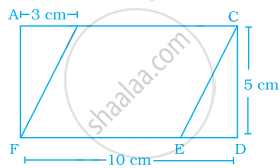Advertisements
Advertisements
Question
In a parallelogram PQRS (See the diagram) PM and PN are the heights corresponding to the sides QR and RS respectively. If the area of the parallelogram is 900 sq.cm and the length of PM and PN are 20 cm and 36 cm respectively, find the length of the sides QR and SR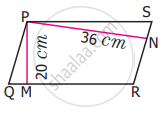
Solution
Considering QR as base of the parallelogram height h1 = 20 cm
Area of the parallelogram = 900 cm2
b1 × h1 = 900, b1 × 20 = 900
b1 = `900/20` = 45 cm
Again considering SR as base height = 36 cm, Area = 900 cm2
b2 × h2 = 900, b2 × 36 = 900
b2 = `900/36`
b2 = 25 cm
SR = 25 cm, QR = 45 cm, SR = 25 cm
APPEARS IN
RELATED QUESTIONS
Find the area of the following parallelogram:
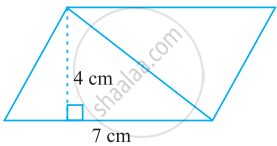
Find the area of the following parallelogram:
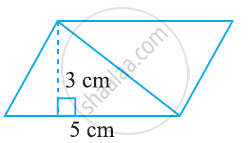
If base of a parallelogram is 18 cm and its height is 11 cm, find its area.
If area of a parallelogram is 29.6 sq cm and its base is 8 cm, find its height.
A parallelogram has sides of 15 cm and 12 cm; if the distance between the 15 cm sides is 6 cm; find the distance between 12 cm sides.
The two sides of the parallelogram ABCD are 6 cm and 4 cm. The height corresponding to the base CD is 3 cm.
Find the
(i) area of the parallelogram.
(ii) the height corresponding to the base AD.

Find the missing values.
| Base | Height | Area |
| 8 cm | 56 sq.m |
What happens to the area of the parallelogram if the base is increased 2 times and the height is halved?
In the given figure, EFGH is a parallelogram, altitudes FK and FI are 8 cm and 4 cm respectively. If EF = 10 cm, then area of EFGH is ______.
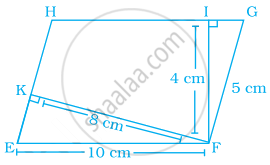
In the given figure, area of parallelogram BCEF is ________ cm2 where ACDF is a rectangle.
